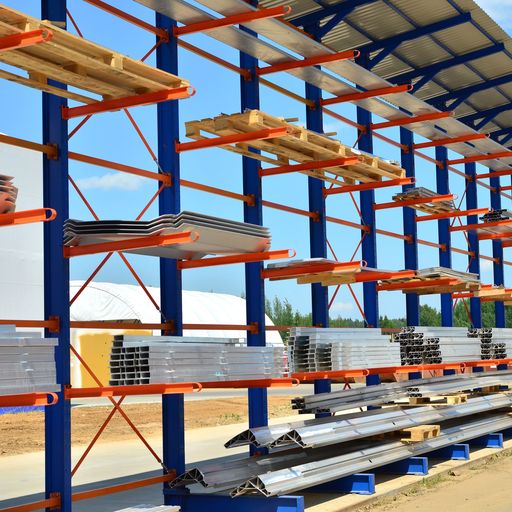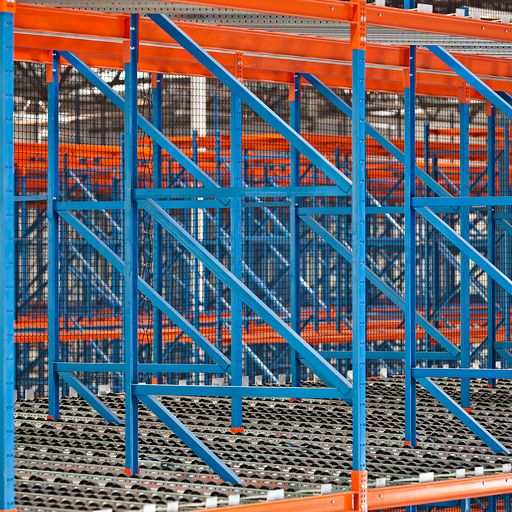9939 Norwalk Blvd, Santa Fe Springs, California, United States of America, 90670
Feeds

Why Regular Pallet Jack Inspections Are a Must
Damaged or improperly installed racking can lead to inventory loss, property damage, legal action and even injury. Regular inspections are necessary to ensure the safety of your team and warehouse. Here are the basics.
How often do you conduct pallet rack inspections? According to the Rack Manufacturers Institute, all racks need to be inspected once a year at an absolute minimum. More frequent inspections are highly recommended, particularly in heavy use facilities.
Any time there’s a reported or suspected forklift impact they should be re-inspected. In fact, any time there’s any type of visible damage it should trigger an inspection.
Rack collapses are serious business. People can die, and rack integrity should be a top priority in any warehouse operation.
Who Should Inspect Your Racks?
Ideally, you should have a professional inspection at least once a year (or after any forklift impact) from an outside party. For more frequent inspections and spot checks, you can use a designated employee that has been properly trained.

What Should Be Checked?
Here are a few items that should be checked by a professional or a fully trained and qualified employee on a regular basis:
Is there any corrosion or rust? Corroded beams or uprights should be inspected carefully. Does there appear to be any weakening of the metal? More importantly, what’s causing the corrosion? Was the paint scraped off by some sort of impact? Is it dented?
Are the racks plumb and level? Poorly installed, reconfigured, or inadequately shimmed racks may be slanted or out of plumb. Sometimes cracking or settling concrete floors can move racks out of alignment. Leaning, crooked or misaligned racks are a “code red” and need to be dealt with immediately.
Compare load to load rating. This is one of the most common and most insidious causes of rack failure. Re-slotting loads without checking the load capacity can lead to overloading and failure. Check loads against the beam ratings and make sure that beam spacing is appropriate for the upright capacity spacing. Although this sounds difficult and time consuming, it’s usually just a check against previous inspections once a baseline is established.
How do the uprights look? Are there any paint scrapes that might be the result of forklift damage? If so, these uprights need to be repaired or replaced as soon as possible.
Is there any damage to the column protectors? If so, remove any that are damaged to check the integrity of the upright.
How are the footplates? Are they securely bolted to the floor? Is there any corrosion?
Are the horizontal braces damaged? Replace any bent or twisted braces and evaluate the root cause of the damage.
Are any beams damaged? Check beams carefully for dings, dents, scrapes, and twists. Replace any that have even marginal damage.
Are the beams firmly attached to the uprights? Check the seating of every connection. Are the safety clips tight? Are there any broken welds?
Are there any connectors missing? Teardrop racks generally have some type of additional fasteners. Are any missing or damaged? If so, can you determine what caused it?
Is any beam deflection within acceptable guidelines? Some deflection or bowing of beams is expected on fully loaded racks. However, beams should not flex more than 1/180th of the total length of the beam. So, on a 96” beam you would expect no more than half an inch of bowing at the center of the beam length. Furthermore, when the load is removed, the beam should no longer bow (i.e. make sure it isn’t permanently bent). For any beam deflection beyond these parameters, beams should be replaced, and load vs capacity should be carefully evaluated.
Document Everything
By keeping meticulous records of inspections, you’ll have a good baseline to evaluate any future anomalies. Make sure to save multiple digital copies and off-site backups of all of your inspections. These documents can be very useful and should be carefully maintained.
Give Us a Call
Do you need a professional inspection? Do you need to replace uprights or beams? Need installation? Call a racking expert at Raymond West!
Rack Racking Storage Optimization Inspection Material Handling Manufacture Training Forklift Lift Truck
About
The end-to-endless optimized solution provider for all your warehouse needs.
Contact
Contact List
| Title | Name | Phone | Extension | |
|---|---|---|---|---|
| Marketing & Sales Support Specialist | Jenna Mayer | jenna.mayer@raymondwest.com | 1858245137 | |
| Sr. Marketing Manager | Tracey Meyers | Tracey.meyers@raymondwest.com | 5627811106 |
Location List
| Locations | Address | State | Country | Zip Code |
|---|---|---|---|---|
| Spokane, WA | 11002 E Montgomery Dr., Suite 100, Spokane Vallley | WA | United States of America | 99206 |
| Seattle, WA | 6607 S 287th St., Auburn | WA | United States of America | 98001 |
| Portland, OR | 3148 NE 181st Ave., Portland | OR | United States of America | 97230 |
| Boise, ID | 743 W McGregor Ct., Suite 100, Boise | ID | United States of America | 83705 |
| Reno, NV | 3148 NE 181st Ave, Reno | NV | United States of America | 89502 |
| San Francisco, CA | 41400 Boyce Road, San Francisco | CA | United States of America | 94538 |
| Stockton, CA | 19107 Christopher Way, Lathrop | CA | United States of America | 95330 |
| Fresno, CA | 2935 S Elm Ave, Suite 101, Fresno | CA | United States of America | 93706 |
| Valencia, CA | 28303 Industry Dr., Valencia | CA | United States of America | 91355 |
| Ontario, CA | 4602 E Brickell St., Ontario | CA | United States of America | 91761 |
| Phoenix, AZ | 2659 E Magnolia St., Phoenix | AZ | United States of America | 85034 |
| Calexico, CA / Yuma, AZ | 285 Rood Rd., Suite 109, Calexico | CA | United States of America | 92231 |
| Nogales, AZ | 480 N. Mariposa Rd. Suite C, Nogales | AZ | United States of America | 85621 |
| Anchorage, AK | 801 E 82nd Avenue, Anchorage | AK | United States of America | 99518 |
| Raymond West Intralogistics - Corporate Office | 9939 Norwalk Blvd, Santa Fe Springs | California | United States of America | 90670 |


